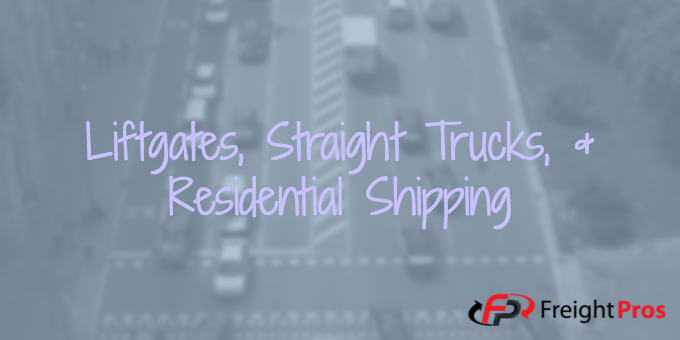
What’s up with Liftgates?
We talk about liftgates a lot here at NTG, and so we wanted to provide some clarification about what they are, when they’re used, and other bits of information you should know if you’re looking to use liftgates for your LTL shipments.
What is a Liftgate?
It’s a lift on the back of trucks used in LTL shipping that moves the freight on and off the truck. Think of it as a freight elevator.
The majority of LTL shipments have a minimum weight of 100 pounds. You throw in that LTL shipments are commonly packaged on standard sized pallets and you’ve got a heavy and unwieldy bit of freight.
Enter the liftgate. If you don’t have a shipping dock available (where you can load and unload the freight using a forklift or other machinery), you’re going to need help getting freight that large off the back of a carrier truck.
While most shippers have access to a forklift and/or loading dock, there is a large contingent of customers that regularly need liftgates: LTL shipments picking up or delivering to a residence.
There’s a lot to know about residential shipping (download the Residential Freight Paper), but suffice to say, a residential pickup or delivery will ALWAYS require a liftgate.
The good news is that most trucks used in residential shipping already have a liftgate on the back of the truck. We usually call these trucks “box trucks” or “straight trucks.”
The bad news is that, like residential shipping, there will be an additional charge for using a liftgate at both pickup and delivery. Usually the charge is under $50, however each carrier will have their own pricing.
There are also some limitations and parameters if you need a liftgate.
Most liftgates can handle freight that is equal to or less than 96 inches wide, and 48 inches deep. This means that standard-sized pallets can easily be used with a liftgate. The weight limit on a standard liftgate is 2500 lbs. If your freight exceeds these dimensions or weight, special accommodations can sometimes be arranged.
One of the perks of using freight brokers comes with their ability to get special pricing, sometimes FAKs, that cover liftgates or offer discounted liftgate prices. Ask your broker if you use liftgates often.Pallet jacks, forklifts, and other miscellaneous items
A pallet jack is used to move the freight from the back of the truck to the liftgate. In rare instances, a pallet jack can also be used to move the freight once it’s been removed from the truck, though there is often an additional charge associated with this action.
Forklifts often act as a way to avoid a liftgate if a loading dock is not available. Forklifts are most often used at construction sites and other outside locations where a dock is not feasible. The carrier will not operate the forklift, nor will they be responsible for any damage accumulated during the loading and unloading of the freight if a forklift is used. Proceed with caution when loading or unloading LTL freight using a forklift.
Liftgates are a very common part of LTL shipping. For most carriers they are readily available, but it’s a good idea to check at least one day ahead if you will be requiring one. They are most often found on straight or box trucks – equipment that is smaller and more able to maneuver tight residential corridors.